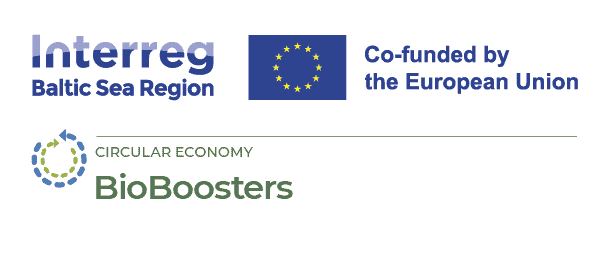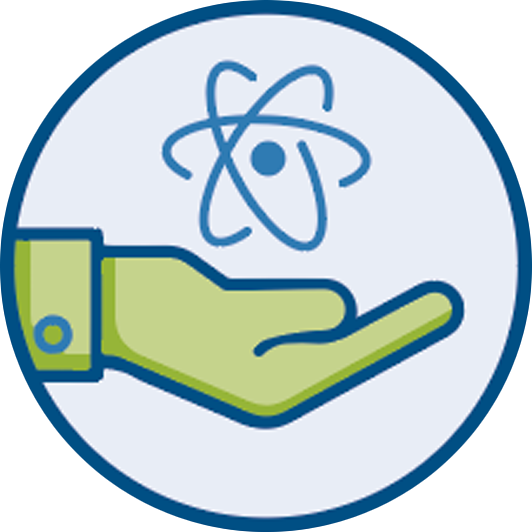
The story of the Hemp Hackathon: Innovate to Elevate
30 June 2025
On March 13–14, 2025, the Estonian University of Life Sciences Centre of Bioeconomy hosted the Nordic Hemp Hackathon: Innovate to Elevate—a two-day innovation sprint designed to accelerate sustainable solutions through interdisciplinary collaboration. Organized in partnership with Nordic Hemp and supported by the Interreg Baltic Sea Region project BioBoosters, the event brought together seven teams and expert mentors from across the Baltic Sea Region and beyond. Their shared mission: to unlock new value chains from hemp by-products—fibers, dust, and hurd—typically overlooked in industrial processing.
Why hemp? Why now?
Hemp is a fast-growing, carbon-sequestering, and fully biodegradable crop with vast untapped potential. Despite its ecological advantages, its by-products remain underutilized. Estonia, cultivating over 7,000 hectares in 2022, ranks as Europe’s second-largest hemp producer—making it an ideal testbed for bio-based innovation. The hackathon leveraged this context to challenge participants to transform agricultural waste into scalable, high-value solutions that align with Europe’s green transition and circular economy goals.
A challenge rooted in real industry needs
The hackathon was grounded in a real-world challenge posed by Nordic Hemp, one of Europe’s largest hemp producers. The company sought novel, economically viable ways to valorize the by-products of hemp stalk decortication—beyond conventional uses like hempcrete, briquettes, or textiles. Participants were encouraged to push the boundaries of current applications and propose bold, scalable innovations that could stimulate rural economies, create jobs, and support emerging markets in health, wellness, and sustainable materials.
Cross-border collaboration for sustainable innovation
A total of 11 applications were submitted by prospective solution providers from Estonia, Finland, Sweden, Poland, Germany, Canada, and Lithuania. From this pool, Nordic Hemp selected seven multidisciplinary teams to participate in the hackathon days. These teams brought together a broad spectrum of expertise, including material science, engineering, entrepreneurship, and design.
The event fostered a collaborative environment that not only encouraged regional cooperation but also laid the groundwork for enduring international partnerships. A key strength of the hackathon was the diversity of its participants—not only in terms of nationality and disciplinary background but also in the developmental stage of their ideas. Teams ranged from early-stage student initiatives to more mature start-ups, creating a dynamic and intellectually stimulating setting for innovation.
This diversity yielded tangible benefits for all stakeholders. Challenge providers gained access to a wide array of creative and applicable solutions, while participants engaged in meaningful knowledge exchange and interdisciplinary learning. The hackathon thus served as both a platform for immediate problem-solving and a catalyst for long-term collaboration within the bioeconomy sector.
Revoltech’s LOVR: A Winning Example of Circular Design
The winning team, Revoltech from Germany, presented LOVR—a patented, plastic-free, biodegradable, and vegan leather alternative made from hemp fibers and dust. Developed in collaboration with the Technical University of Darmstadt, LOVR (leather-free, oil-free, vegan, residue-free) is soft, durable, and fully compostable. Already gaining traction in fashion, interior design, and automotive sectors, LOVR is set to be integrated into Volkswagen vehicles by 2028. This innovation exemplifies how circular design can transform agricultural residues into commercially viable, sustainable materials.
The BioBoosters Model: Bridging Research and Entrepreneurship
The recent hackathon, organized by the Centre of Bioeconomy and Nordic Hemp Cooperation and supported by the Interreg Baltic Sea Region project BioBoosters, showed how research and entrepreneurship can come together to create real-world solutions. The event focused on solving real industry problems and brought together students, researchers, start-up founders, and professionals to share ideas and work together.
The hackathon followed a clear structure that encouraged hands-on learning and business thinking. Experienced mentors helped teams with important topics like intellectual property, business planning, and how to enter the market. Their support helped turn early ideas into practical, ready-to-launch solutions.
Participants were challenged to think beyond traditional hemp products like hempcrete or briquettes. Instead, they explored bold and scalable ideas that could better meet the needs of the growing bioeconomy sector. This created an exciting space where creativity and real-world impact came together.
For many, the experience was eye-opening. Students developed their ideas into real plans, mentors learned from fresh perspectives, and companies gained new insights into familiar challenges. The BioBoosters model proved to be more than just a hackathon—it was a powerful way to connect research with entrepreneurship and support sustainable innovation.
Learnings from the first BioBoosters hackathon pilots
A key advancement was the synergistic combination of real-world industry challenges with academic learning environments, particularly through collaboration with institutions such as the Estonian University of Life Sciences. This integration fostered a mutually beneficial relationship: students applied theoretical knowledge to practical, sector-specific problems, while industry partners gained access to research-informed insights and novel perspectives. This academic-industry synergy emerged as a defining strength of the BioBoosters model, setting it apart from conventional hackathon formats and demonstrating its potential for long-term, systemic impact.
Equally important was the role of expert mentoring and the active involvement of the BioBoosters partner network. Mentors provided critical guidance in areas such as intellectual property, business modelling, and market entry strategies, helping teams refine their ideas into viable, market-ready solutions. The partner network played a central role in shaping the challenges, supporting participants, and facilitating cross-border collaboration—ensuring that the hackathons were not isolated events, but part of a broader innovation ecosystem.
The BioBoosters model has demonstrated that aligning real-world challenges with open innovation, academic engagement, and strong mentorship can produce outcomes that are both practical and visionary. It promotes sustained collaboration, strengthens international networks, and empowers participants to co-create innovative solutions for a more sustainable bioeconomy.
Katrin Kepp, Head of the Centre of Bioeconomy, BioBoosters project manager
Email: katrin.kepp@emu.ee
Mobile: +372 56 157 938
The Centre of Bioeconomy, Estonian University of Life Sciences, Tartu, Estonia
Interactive map showing pilot locations. Use the arrow keys to move the map view and the zoom controls to zoom in or out. Press the Tab key to navigate between markers. Press Enter or click a marker to view pilot project details.





